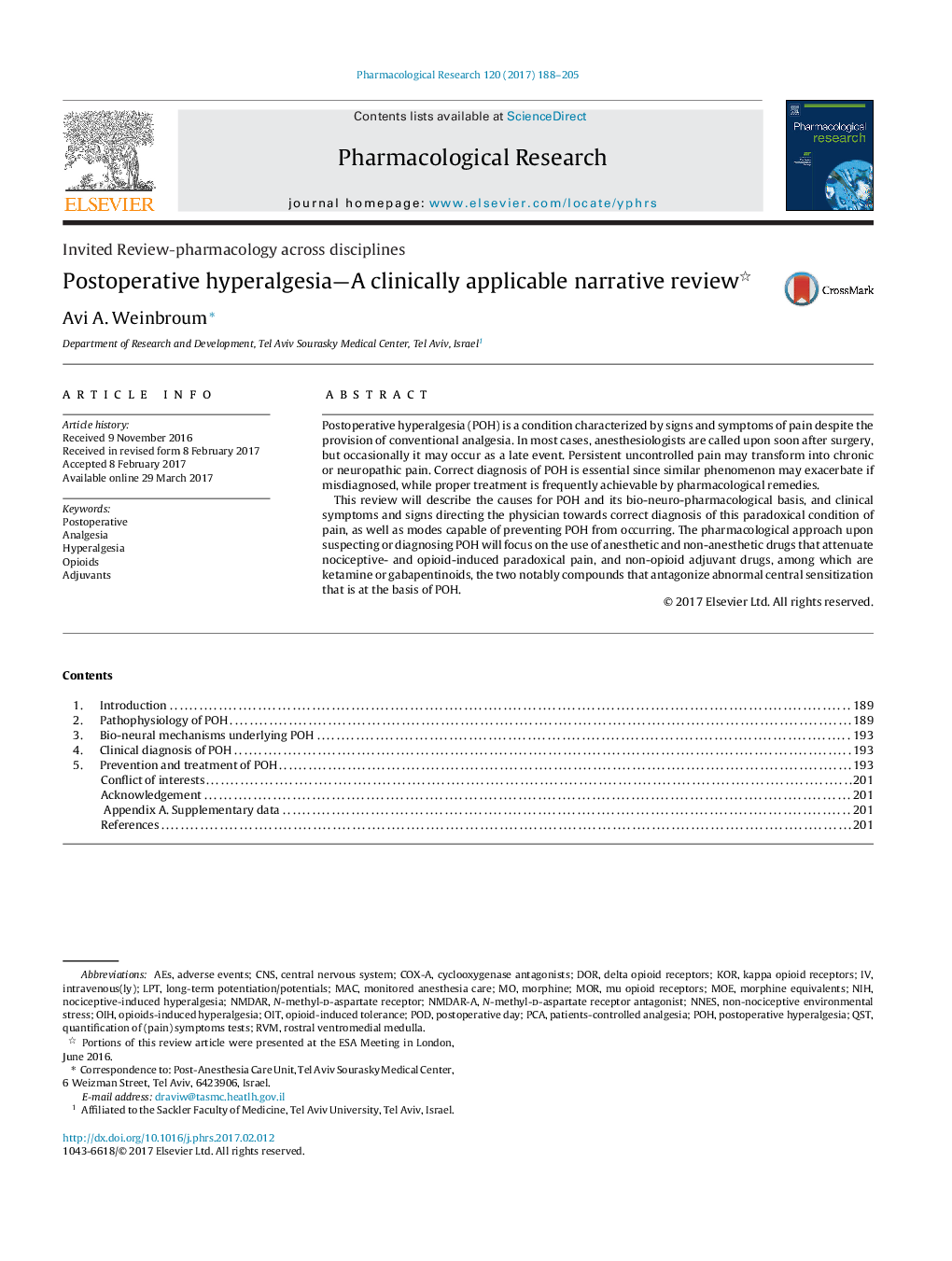| Article ID | Journal | Published Year | Pages | File Type |
|---|---|---|---|---|
| 5557236 | Pharmacological Research | 2017 | 18 Pages |
â¢Postoperative hyperalgesia (POH) is a abnormal, paradoxical sensation of pain or increased sensitivity to non-painful stimuli.â¢Opioid-induced and nociceptive-induced hyperalgesia are the two main causes of POH. Genetic and individual conditions may promote it as well.â¢N-methyl-D-aspartate receptor (NMDAR) activation plays a central role in the development of POH.â¢Besides preoperative preventive measures, NMDAR antagonists are the most efficacious drugs for the prevention or attenuation of POH.â¢POH requires prompt recognition of the underlying bio-neurological process, and skillful multimodal approach in order to control it.
Postoperative hyperalgesia (POH) is a condition characterized by signs and symptoms of pain despite the provision of conventional analgesia. In most cases, anesthesiologists are called upon soon after surgery, but occasionally it may occur as a late event. Persistent uncontrolled pain may transform into chronic or neuropathic pain. Correct diagnosis of POH is essential since similar phenomenon may exacerbate if misdiagnosed, while proper treatment is frequently achievable by pharmacological remedies.This review will describe the causes for POH and its bio-neuro-pharmacological basis, and clinical symptoms and signs directing the physician towards correct diagnosis of this paradoxical condition of pain, as well as modes capable of preventing POH from occurring. The pharmacological approach upon suspecting or diagnosing POH will focus on the use of anesthetic and non-anesthetic drugs that attenuate nociceptive- and opioid-induced paradoxical pain, and non-opioid adjuvant drugs, among which are ketamine or gabapentinoids, the two notably compounds that antagonize abnormal central sensitization that is at the basis of POH.
Graphical abstractRepresentation of bio-neural sites involved in pain sensitization and multimodal treatment. Reprint with permission from A. Vinik, J. Ullal, H.K. Parson, C.M. Casellini, Diabetic neuropathies: clinical manifestations and current treatment options, Nat. Clin. Pract. Endocrinol. Metab. 2 (2006) 269-281.Download high-res image (136KB)Download full-size image
